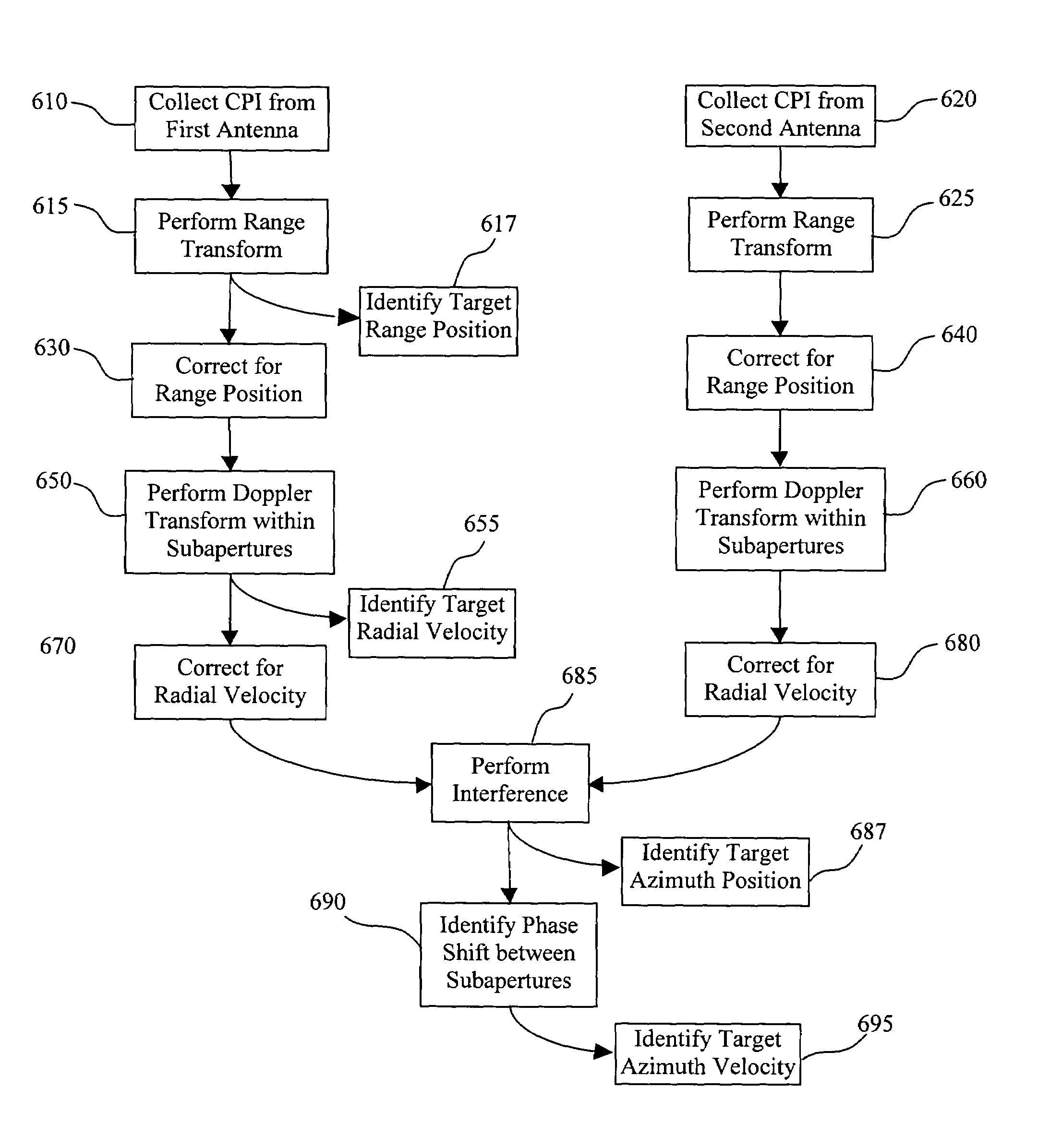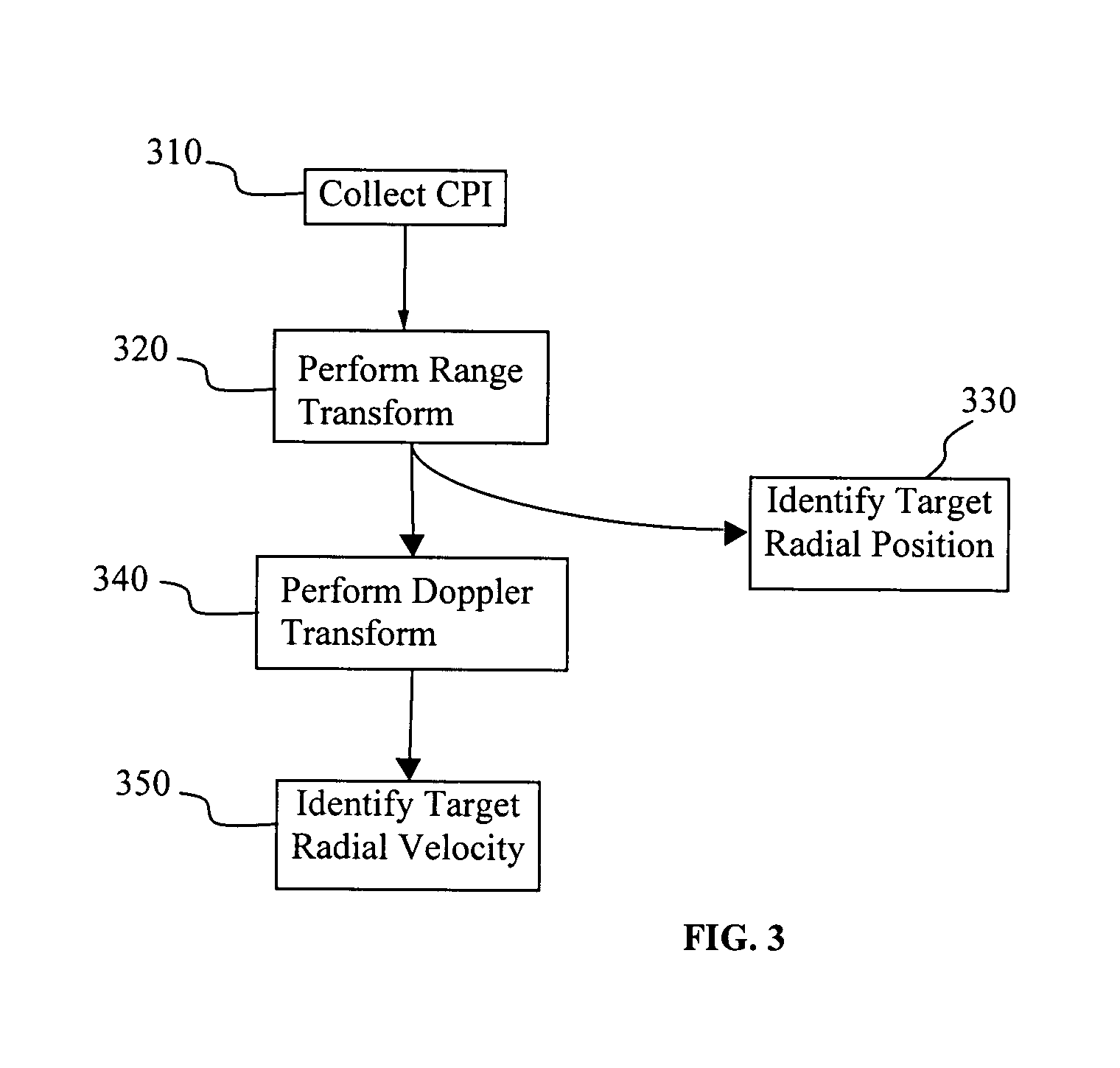Tangential velocity measurement using interferometric MTI radar
- Summary
- Abstract
- Description
- Claims
- Application Information
AI Technical Summary
Benefits of technology
Problems solved by technology
Method used
Image
Examples
example
[0061]An interferometric GMTI has an antenna baseline spacing ba=3 m, and an operating frequency of 16.7 GHz. Furthermore, a target exists with an actual tangential velocity of 90 m / s at a range |rc0|=5 km, and SNR after interference is 100 (20 dB). With a CPI of TpN=0.25 s, an expected system precision of σvsa=3.8 m / s can be expected.
The result of the previous example assumes a single CPI. It should be appreciated after the foregoing teaching that tracking the target over multiple CPIs in the conventional manner will allow refinement.
PUM
 Login to View More
Login to View More Abstract
Description
Claims
Application Information
 Login to View More
Login to View More - R&D
- Intellectual Property
- Life Sciences
- Materials
- Tech Scout
- Unparalleled Data Quality
- Higher Quality Content
- 60% Fewer Hallucinations
Browse by: Latest US Patents, China's latest patents, Technical Efficacy Thesaurus, Application Domain, Technology Topic, Popular Technical Reports.
© 2025 PatSnap. All rights reserved.Legal|Privacy policy|Modern Slavery Act Transparency Statement|Sitemap|About US| Contact US: help@patsnap.com



